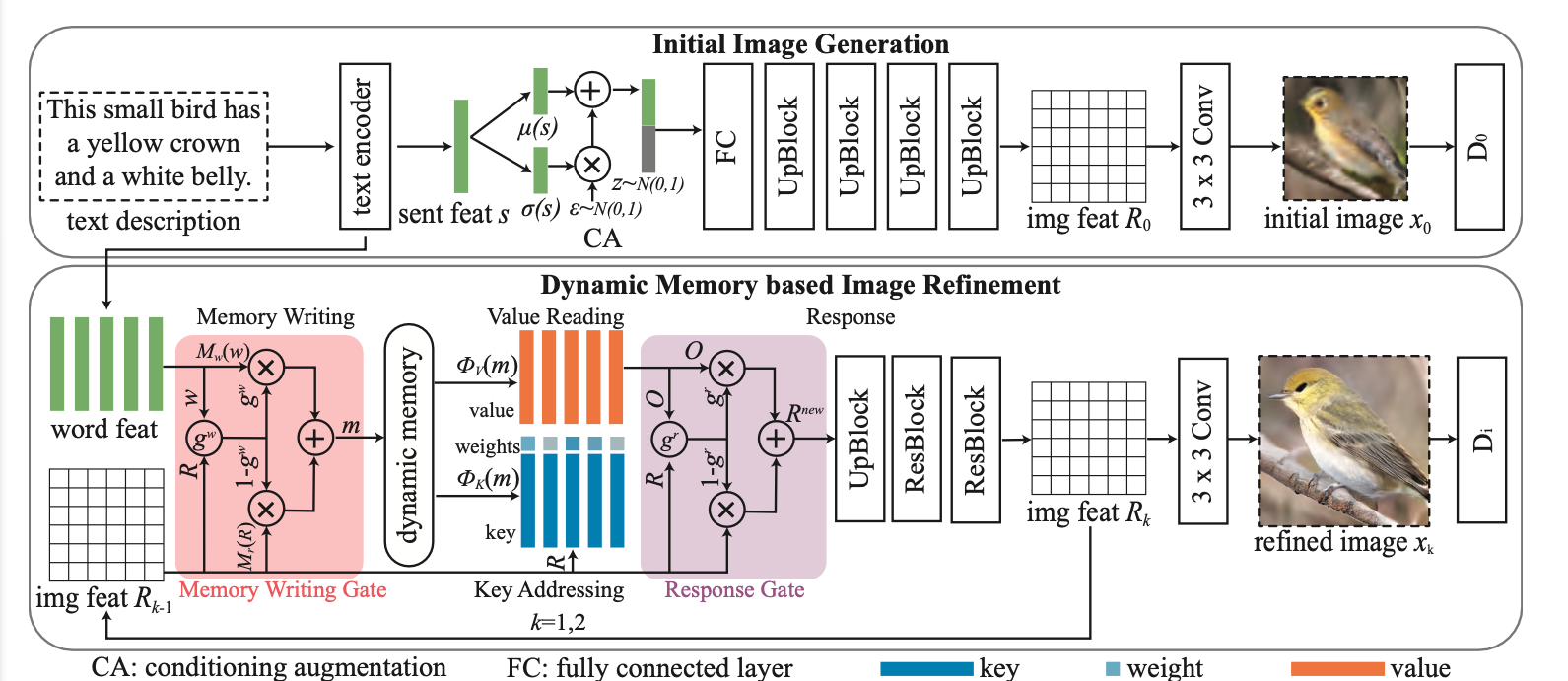DM-GAN: Dynamic Memory Generative Adversarial Networks for Text-to-Image Synthesis
1.What is this paper about?
It proposes the Dynamic Memory Generative Adversarial Network (DM-GAN) to generate high-quality images by modifying the initial images.
2.What’s better than previous paper?
Previous model have two problems.
(1)These methods depend heavily on the quality of the initial images.
(2)Each word in an input sentence has a different level of informa- tion depicting the image content.
It addresses these issues.
3.What are important parts of technique and methods?
The architecture of it is composed of two stages: initial image generation and dynamic memory based image refinement.

The dynamic memory based image refinement stage consists of following four components.
- Gated Memory Writing
It allows the model to select the relevant word to refine the initial images.
- Gated Response
It allows to adaptively fuse information from image and memory.
- (Key Addressing, Value Reading)
They operations are employed to read features from the memory module to refine the visual features of the low-quality images.
4.How did they verify it?
- Text-to-Image Quality
It’s evaluated on the CUB and the COCO datasets. As a metrics, it use Inception Score (IS), Frechet Inception Distance (FID), and R-precision.
It shows that the experimental results indicate that it is superior to the state-of-the-art models.
- Visual Quality
The validity of this model was demonstrated in three aspects: the ability to recognize foreground and background images, the ability to correct, and diversity.